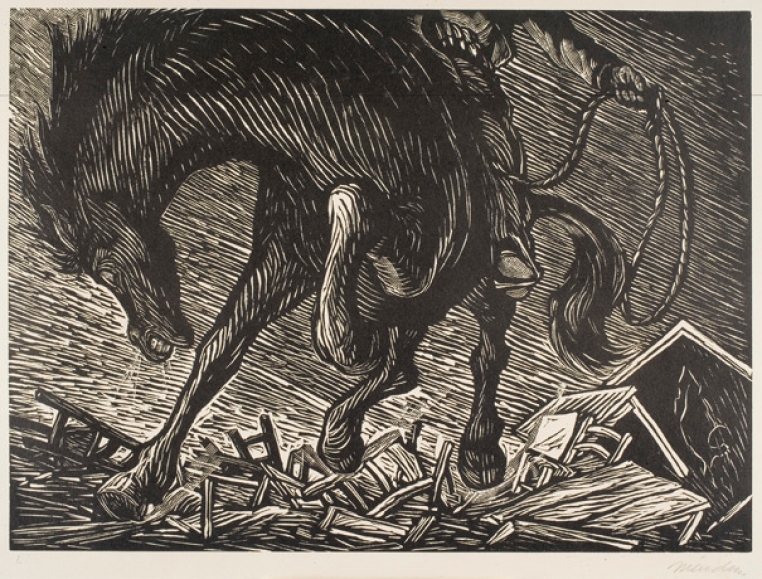
The linkages between cinema and the visual arts are extensive, ranging from movie posters and film stills to the role of artists as set designers and cameramen. This was particularly true in Mexico in the 1930s and 1940s. This exhibition features two important portfolios of work produced in Mexico with particular connections to contemporary film.
Paul Strand’s Mexican Portfolio (first published in 1940) consists of twenty photogravures showing individuals, buildings, and religious figures, based on photographs taken in 1932-33. These idealized images of rural Mexico both resemble and contrast with scenes in The Wave (1934), Strand’s radical film featuring oppressed fishermen in coastal Veracruz. Leopoldo Méndez’s Río Escondido portfolio (1948) includes ten linocuts made expressly for the title sequence of a film by Emilio Fernández. Working from the script, Méndez created powerful images that embody the political and moral messages of Fernández’s patriotic melodrama.

Paul Strand, Virgin, San Felipe, Oaxaca from The Mexican Portfolio, 1933. Photogravure, Wellesley College Art Library
These two complex series are presented in their entirety, together with related images drawn from the Davis Museum’s rich holdings of Mexican works on paper. An innovative installation, including video screens showing both films, propose new readings of these classic Mexican images from the perspective of the history and aesthetics of cinema.
This exhibition is funded by the Wellesley College Friends of Art.
James Oles
Adjunct Curator of Latin American Art and Art Department Senior Lecturer